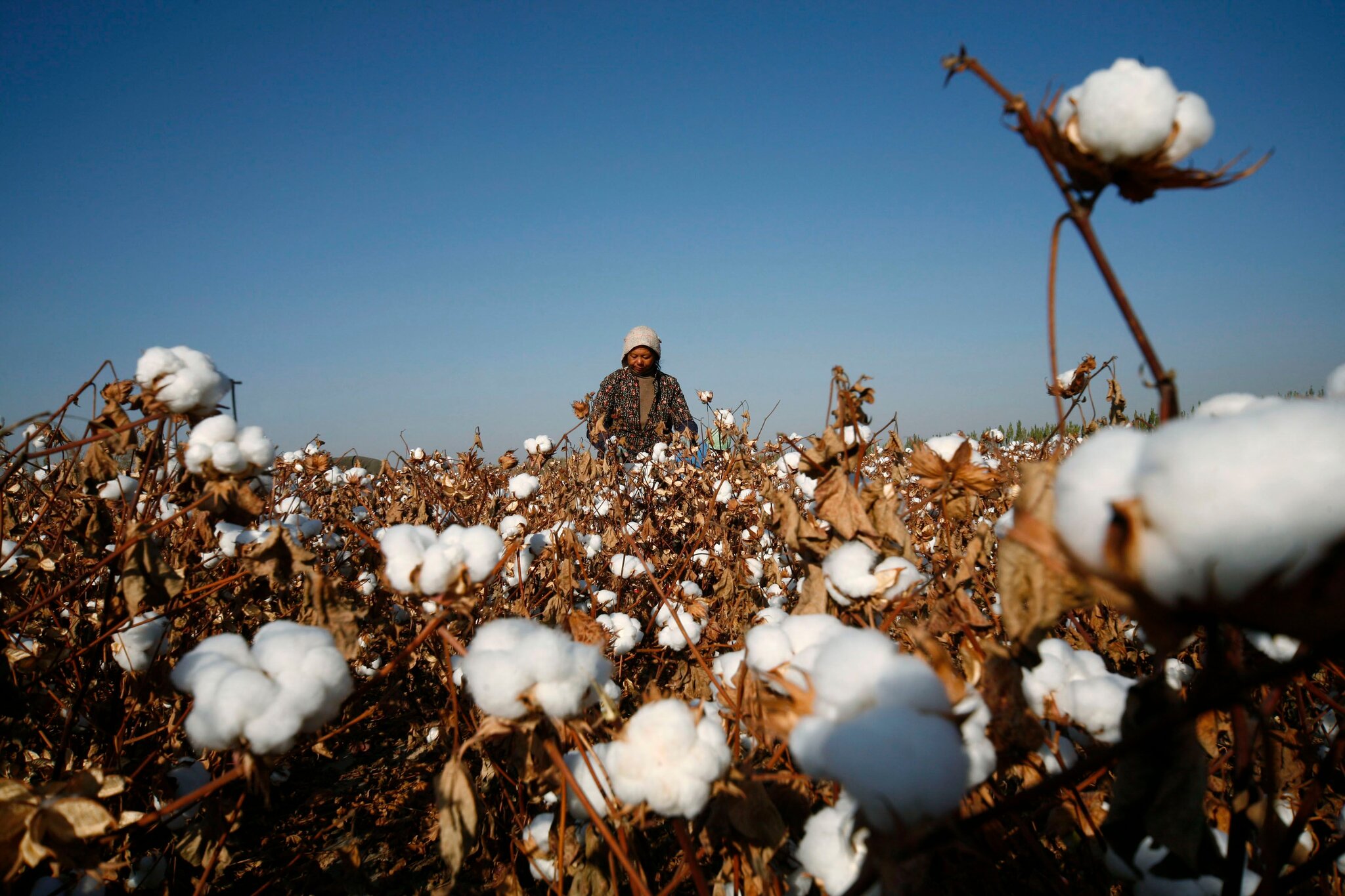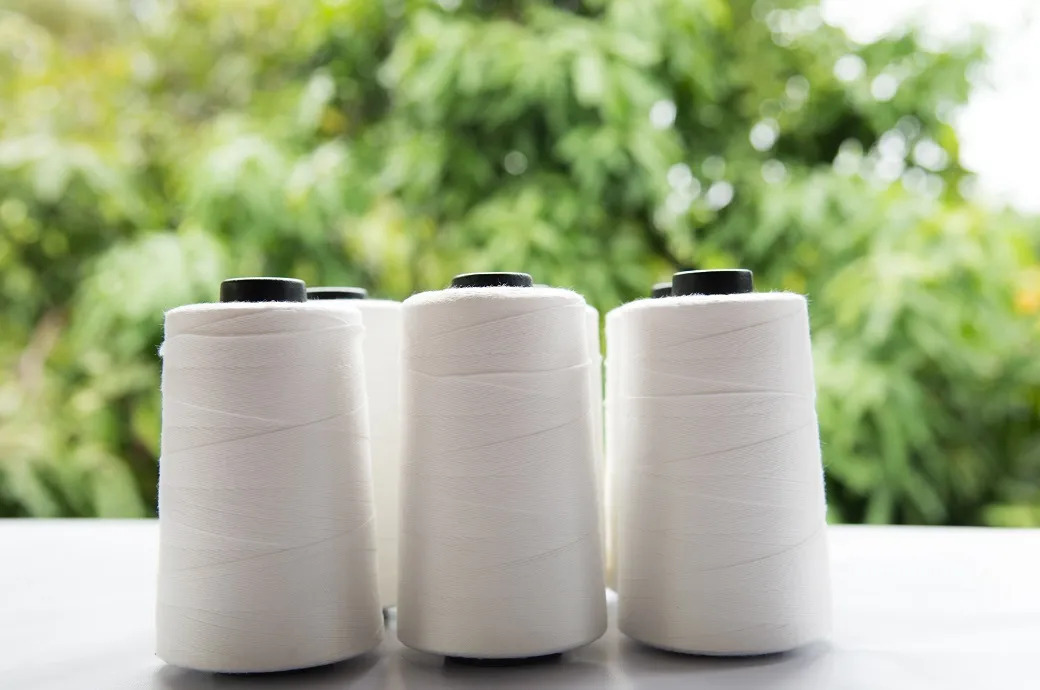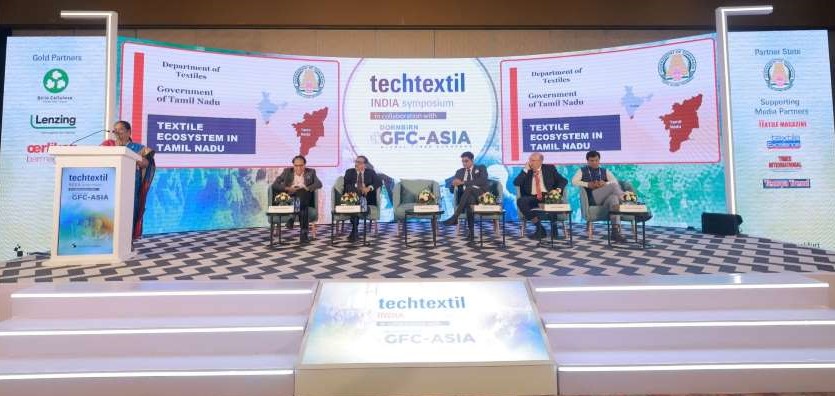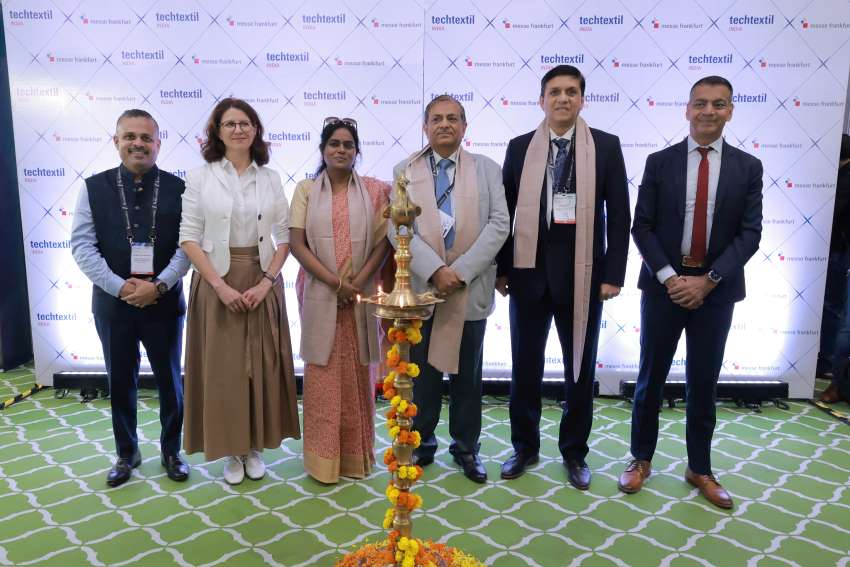FW
Columbia Sportswear Company registered a 1 per cent Y-o-Y increase in net sales to $943.4 million in Q3, FY25. This slight rise was attributed primarily to the timing of wholesale shipments, which added roughly $30 million, but was largely offset by weaker direct-to-consumer (DTC) performance in the US market.
The company's international business provided the main momentum, with Europe-direct markets leading the gains with double-digit growth. This strong performance in the Europe, Middle East, and Africa (EMEA) region drove sales up 16 per cent to $164.5 million, reflecting successful engagement with younger consumers. The Latin America and Asia Pacific (LAAP) and Canada regions also reported growth. Conversely, US sales declined by 4 per cent.
Financially, the quarter saw a sharp drop in profitability. Their operating income declined by 40 per cent to $67.4 million, primarily due to $29 million in impairment charges related to the Prana and Mountain Hardwear brands. This led to a drop in net income to $52 million, or $0.95 per diluted share. The gross margin also contracted slightly to 50 per cent due to incremental tariffs and unfavorable exchange rates.
By brand, Sorel reported the highest growth in sales of 10 per cent while sales of the brand Columbia grew by only 1 per cent.
Tim Boyle, Chairman and CEO notes, international success validates the company’s growth strategy, while acknowledging the need to revitalize the Columbia brand in the US. The brand’s new ‘Engineered for Whatever’ platform aims to revive its irreverent spirit, he adds.
For the full year, Columbia forecasts, net sales are likely to decline by 1 per cent to $3.33–3.37 billion. Full-year diluted EPS is anticipated to be between $2.55 and $2.85, reflecting the one-time impairment charge. Looking ahead, the company projects an 8–5 per cent sales decline in Q4, FY25, heavily impacted by the shipment timing that benefited Q3.

At Paris Fashion Week, Stella McCartney once again blurred the line between fashion and science. Her latest innovation, denim that actively purifies the air marks a radical evolution in the sustainability narrative. In partnership with the material technology company Pure.tech, McCartney unveiled garments that don’t just minimize environmental harm; they repair it.
Debuting as part of her Summer 2026 collection, the new line showcased fabrics engineered to capture and neutralize pollutants such as carbon dioxide (CO₂), nitrogen oxides (NOx), and volatile organic compounds (VOCs). The concept turns every wearer into a walking air filter transforming fashion from a passive consumer product into an active environmental participant.
Inside Pure.tech, turning fabric into a pollution filter
The brain behind Pure.tech Italian technologist Aldo Sollazzo, has developed a patented water-based slurry compound that can be applied to textiles through traditional processes such as foulard, padding, or coating. Once integrated, the treatment initiates a continuous process of catalysis and photocatalysis, breaking down toxic gases into harmless minerals.
Independent laboratory tests reveal striking efficiency: a mere 30-gm fabric sample can eliminate over 2,200 ppm of CO₂ in under 10 hours. In urban terms, that means a single jacket or pair of jeans could offset small-scale emissions in a city environment, while millions of such garments could meaningfully reduce air pollution levels. “This isn’t about reducing our footprint, it’s about reversing it,” McCartney said during the Paris launch. “We’ve always talked about sustainable fashion; this is regenerative fashion.”
The science of self-cleaning textiles
Behind the glamour of the runway lies a serious scientific backbone. The principles powering Pure.tech come from environmental engineering and nanotechnology, long applied in air-purifying paints and architectural coatings.
Photocatalysis: Often driven by compounds like titanium dioxide (TiO₂), photocatalysis uses light energy to generate electrons that break down pollutants. This reaction decomposes NOx and VOCs into inert compounds.
Catalysis: Here, the treated fabric acts as a catalyst, boosting pollutant breakdown without being consumed and allowing garments to maintain their functionality over time. These hybrid reactions create a regenerative loop, allowing clothing to operate as a low-maintenance, continuous air-cleansing system.
A growing movement, where textiles go beyond aesthetics
McCartney’s Pure.tech denim is the latest step in a broader shift toward functional sustainability, where materials don’t just avoid damage they deliver benefits. Several earlier experiments have paved the way for this new generation of ‘pollution-eating’ fashion.
Catalytic clothing project (2008)
A collaboration between the London College of Fashion and the University of Sheffield, this initiative applied photocatalytic titanium dioxide coatings to fabrics via laundry processes. The vision was simple yet bold, transform everyday garments into urban air purifiers activated by light.
Post Carbon Lab’s living algae fabrics
London-based Post Carbon Lab developed textiles infused with photosynthetic micro-organisms like algae. As wearers move, the living coating absorbs CO₂ and releases oxygen, mimicking the respiration of plants. The studio claims a single treated T-shirt can produce as much oxygen as a young oak tree.
Airlite, McCartney’s earlier experiment
In her Winter 2024 collection, McCartney used Airlite coating on her iconic Falabella tote bags. The semiconductor-based technology generates a surface charge that produces negative ions, neutralizing pollutants in contact with the bag an early glimpse of the direction her brand would later take to scale the idea into apparel.
Fashion’s new frontier, regenerative luxury
The introduction of Pure.tech denim and Fevvers, a plant-based alternative to feathers, marks an important moment in McCartney’s journey, and potentially, for fashion itself. Her approach exemplifies the next stage of sustainable design: from carbon-neutral to carbon-negative. This shift aligns with a larger industry trend. Global luxury and performance brands are investing heavily in bioengineered materials, circular manufacturing, and climate-positive textiles. Analysts predict that the regenerative fashion market could grow from a niche innovation sector into a $20 billion global opportunity by 2030, as consumer demand for climate-conscious luxury accelerates. “We are entering an era where clothes are not just worn, they work,” says Sollazzo. “When the surface of your jeans helps purify the air you breathe, fashion becomes infrastructure.”
Toward a smarter, cleaner wardrobe
The implications go far beyond aesthetics or personal branding. Imagine urban networks of wearers, each garment quietly filtering carbon and nitrogen compounds as people go about their day. Scaled up, such technology could complement existing clean-air initiatives, from green roofs to low-emission zones.
What began as a creative experiment on the Paris runway could soon evolve into a scalable environmental solution transforming fashion into a distributed system of micro air purifiers. As Stella McCartney’s Pure.tech denim highlights, the most powerful trends in fashion are no longer about hemlines or hues they’re about how fabric interacts with the planet itself.
Borre Hegbom has been appointed as the Senior Vice President, Global Head, Helly Hansen by Kontoor Brands
Hegbom will be responsible for executing the strategic plan designed to accelerate growth across the entire Helly Hansen business, globally leading both the Sport and Workwear categories. He joins Kontoor Brands' Executive Leadership Team and will report directly to Scott Baxter, President, CEO, and Chairman of the Board of Directors.
Hegbom brings more than two decades of experience with Helly Hansen, most recently serving as Managing Director, Sport. During his tenure, he was credited with leading significant growth in the Sport category and helping establish Helly Hansen as a rising force in the outdoor and performance apparel market.
Baxter added, with Kontoor's global platforms and capabilities supporting the brand, there are ‘significant opportunities ahead - from US market expansion and unlocking new distribution channels to product innovation and category expansion. He looks forward to partnering with Hegbom to capitalize on the brand's strong momentum to accelerate growth and deliver long-term value for shareholders.
Kontoor Brands, Inc. is a purpose-led organization that manages a portfolio of iconic lifestyle, outdoor, and workwear brands: Wrangler, Lee, and Helly Hansen.
Calvin Klein has rolled out the Re-Calvin takeback program in the US, making it easy for consumers to responsibly dispose of clothing from any brand and in virtually any condition.
The program is powered by the trade-in technology platform Trove and logistics partner Debrand. It will sort items for reuse, recycling, or responsible disposal. Crucially, Re-Calvin accepts categories usually excluded from takeback initiatives, such as bras, swimwear, and underwear.
To add transparency, consumers get an email update after their parcel is processed, detailing exactly how their items were routed.
David Savman, Global Brand President, Calvin Klein, avers, as Calvin Klein continues its sustainability journey, it has introduced a program that makes circularity more accessible for customers and delivers alternative uses for pre-loved items.
The Re-Calvin program uses Trove’s Takeback Plug-In, which seamlessly manages item intake, routing, and transparency by integrating directly with the existing US Calvin Klein website.
Circular commerce is becoming a huge part of the consumer shopping experience, even for gifts. Data from Salesforce suggests, that 47 per cent of US consumers are likely to gift a secondhand item this holiday season. This trend is expected to generate an impressive $64 billion in resale-generated holiday sales.
A growing number of brands are deploying their own circularity programs. Brands like DXL, Uniqlo, Figs, Sanctuary, and Babylist have launched resale programs. Peloton began a three-city test of a resale program in June 2025.
Trove acquired resale platform Recurate in August 2024. In October 2024, Patagonia began using Trove’s Resale Plugin to integrate pre-owned items alongside new products on its main e-commerce platform. Luggage brand Béis also launched its resale program using the Trove platform in October 2024.
Major baby apparel retailer, Carter’s Inc is undertaking significant operational cuts to combat the financial pressures stemming from previously introduced import tariffs. The company announced plans to close 150 stores across North America by 2028, revising its closure target upward from an initial plan of 100. These closures, which impact stores collectively contributing around $110 million in annual net sales, are scheduled to take place this fiscal year and in 2026.
In addition to the store closures, Carter’s is streamlining its corporate structure, intending to reduce its office-based workforce by 300 employees by the end of the current year. The company estimates the annual gross pre-tax impact of the additional import duties could range between $200 million and $250 million.
The strategic announcements coincided with the release of the company’s fiscal third-quarter earnings report. While the brand’s net sales declined by 0.1 per cent to $757.8 million, the company’s operating income took a massive hit, dropping 62.2 per cent to $29.1 million. Consequently, the operating margin shrank from 10.2 per cent a year earlier to just 3.8 per cent. Net income for the quarter plummeted to $11.6 million from $58.3 million, or $1.62 per diluted share, in the prior year.
Douglas Palladini, CEO and President, noted, while US retail business demand improved with positive comparable sales, elevated product costs, in part due to the impact of higher tariffs, as well as additional investment, weighed meaningfully on their profitability.
To mitigate future tariff risks, Carter's has drastically shifted its sourcing strategy, with countries like Vietnam, Cambodia, Bangladesh, and India set to account for 75 per cent of its product sourcing spend in FY25, while China’s share is expected to drop to less than 3 per cent. Due to the ongoing uncertainty surrounding the tariff impact, Carter’s has currently suspended its fiscal 2025 guidance.
Kering Group fashion house, Gucci is venturing into the world of technical winter sportswear with Jannik Sinner as the global brand ambassador for the brand’s first technical mountainwear collection, titled ‘Altitude,’ launching worldwide for Autumn/Winter 2025/26.
Drawing inspiration from the precision of technical snowwear and the Maison’s long-standing heritage in leisurewear, the men’s and women’s collection spans ready-to-wear, accessories, footwear, and a curated selection of high-performance equipment developed in partnership with Head. The range includes skis, poles, snowboards, sports bags, and helmets adorned with Gucci’s iconic Web stripe.
Blending advanced performance with the Maison’s signature design codes, the collection features innovative technical materials and cutting-edge construction. The pieces are crafted from breathable three-layer fabrics, feature water-repellent finishes, and include functional details such as ski pass pockets and touchscreen-compatible inner panels. Completing the range is a line of eyewear - including ski goggles and wraparound sunglasses - both prominently displaying the Gucci logo.
The campaign positions ‘Altitude’ as the perfect balance between performance and sophistication. Alpine wear is reimagined through a modern lens, with each piece designed to move seamlessly with its environment — marrying form, function, and elegance.
Marked by a decline in key international benchmarks, global cotton prices eased during October. According to Cotton Incorporated, the softer trend reflects persistent weak global demand and typical seasonal market softness as the 2025 crop harvest season advances.
The NY/ICE December contract dropped below a key support level of 66 cents per pound, hitting a new contract-life low below 65 cents, though it managed a slight recovery later in the month. The Cotlook A Index slipped from 78 cents to 76 cents per pound.
In China, the CC Index (3128B) fell to 94 cents per pound. The Chinese Yuan (RMB) remained stable against the dollar at roughly RMB 7.12 per US$.
Prices in South Asian markets were comparatively stable, largely due to domestic currency strength. India's Shankar-6 cotton prices held steady at 78 cents per pound (around Rs 55,000 per candy), supported by a stable Rupee Rs 88 per US$.
Pakistan saw spot prices remain steady at about 68 cents per pound backed by a stable Pakistani Rupee at PKR 28 per US$.
The overall weakness across global benchmarks suggests that worldwide demand for cotton is sluggish, a factor that continues to weigh on the market as new supply enters the system.
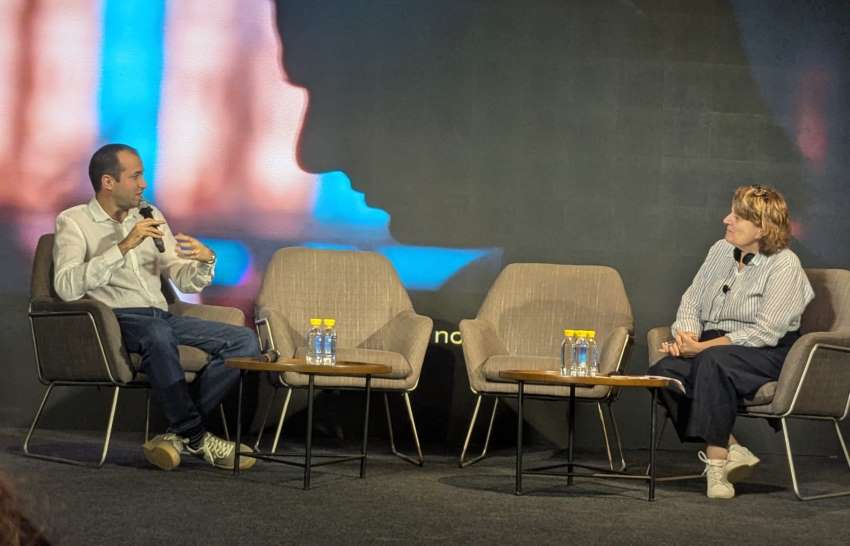
The inaugural 'Italian Fashion Days in India' (Le Giornate della Moda Italiana nel Mondo) officially kicked off yesterday, October 28, at the Italian Embassy in New Delhi, marking a significant new step in the strategic partnership between Italy and India. This three-city initiative, described as the first of its kind in India, was a key component of Italy's "Diplomacy and Growth Strategy" that continued in Mumbai on Oct 29 and on Oct 30th in Ahmedabad.
On Day 2 of the summit, the spotlight shifted from international trade to internal corporate dynamics, revealing a major cultural shift that is driving the successful turnaround of major Italian fashion and lifestyle houses.
The Turnaround Strategy: Investment and culture
Speaking at the event, Alberto Racca, CEO of the Miroglio Group, Trussardi, and Gentle Society, discussed the difficult period his company faced six years ago, noting that things were “not going so well” even before the COVID-19 pandemic. However, the crisis period led to aggressive strategic choices, resulting in a dramatic turnaround, with business now doing "much better."
Racca attributed this success not just to financial decisions, but to a fundamental change in corporate philosophy. Strategic investments in product development, customer relationship management (CRM), and brand positioning were crucial, but the "key factor of life for all of this is a way of doing things."
Age is Just a Number: The talent obsession
The most radical change involves a shift away from traditional, seniority-based management towards an intense focus on young, high-potential talent. Racca’s new strategy explicitly aims to "train those who learn quickly and make things happen, regardless of their age."
This is not just rhetoric; it’s a measurable reality. Racca disclosed that the company now has $100 million businesses driven by people as young as 29 years old. He insisted that age differences are irrelevant, as the obsession is purely on talent.
The company has a highly selective program targeting university graduates, putting 24-year-olds through an 18-month high-intensity course with specific project responsibilities. The goal is clear: promote these individuals into middle management within two years.
“It has paid,” Racca noted, explaining that this rapid acceleration attracts a quality of management that might otherwise be drawn to different industries.
The power of ‘Gentleness’
Underpinning this talent revolution is a new cultural cornerstone: gentleness. In a world that often seems to demand “brute force,” Racca proposed a different path.
"We are going to talk about gentleness, because gentleness doesn't mean being naive, but it means being intelligent in terms of taking the value from the person around us," he explained. The philosophy emphasizes a culture of continuous learning—rejecting the idea of being the one who “knows everything” in favor of the one who “learns everything.”
"Gentle Society" refers to the brand philosophy by Trussardi, which promotes kindness and meaning in everyday life. The Trussardi concept is showcased in its FW25 campaign and is an open collective of creatives.
By focusing on humility, rapid growth, and recognizing the intelligence and value of every collaborator, this Italian fashion executive is demonstrating that a supportive, talent-obsessed culture can be the most powerful driver for enduring global success in the modern, impatient marketplace.

The global garment industry, long a symbol of globalization’s success and excess is entering an age of disruption. Traditional business models are being upended by changing consumer behavior, supply chain shocks, and technological transformation. Yet according to renowned apparel strategist David Birnbaum, much of the current turbulence stems not from the industry itself, but from the misguided assumptions of governments and retailers who misunderstand its unique dynamics. “The problem,” Birnbaum argues, “is that policy and business decisions are designed for industries that look nothing like ours.” His critique, though directed primarily at Western policymakers, resonates across the global fashion economy from Dhaka to Los Angeles.
Government policies miss the mark
Birnbaum’s central argument targets the mismatch between government trade policies and the economic realities of garment production. Take, for instance, the Trump-era tariffs imposed on Chinese and Vietnamese apparel. The goals: bringing back US manufacturing jobs, boosting government income, and achieving trade reciprocity sound reasonable in theory. But in practice, they miss the mark.
Garment manufacturing, Birnbaum points out, is not coming back to the US anytime soon. The economics simply don’t work: labor costs are too high, automation too complex, and supply chains too globalized. Moreover, while tariffs punish exporters like China and Vietnam, they simultaneously hurt some of the world’s poorest garment-producing nations viz. Bangladesh, Pakistan, and Cambodia by making their products less competitive.
The same logic flaw plays out in India’s policy ecosystem. Government schemes like PLI (Production-Linked Incentives) and RoSCTL (Rebate of State and Central Taxes and Levies) aim to boost manufacturing competitiveness. Yet, experts argue they often fail to recognize that garmenting is a low-margin, high-volume, labor-sensitive industry, not easily scalable through subsidies alone. “Apparel is not about capital intensity or technology alone; it’s about predictability, agility, and trust across borders,” says Rajiv Kapoor, former head of an export consortium in Tiruppur. “When policies chase quick wins, they miss the fabric of the business.”
Ironically, these tariffs may even reduce government income, as importers shift sourcing to low-duty or least-developed countries, shrinking the taxable base. The result is a lose-lose equation: no jobs repatriated, no fiscal gain, and higher prices for consumers.
Why garments don’t make money for retail giants
Birnbaum’s second, more provocative claim is that garments are a fundamentally unprofitable category for large retailers. Unlike electronics or household goods, apparel presents unique challenges:
Infinite variability: A single shirt can exist in hundreds of combinations fabric, color, gender, size, and fit. A microwave, by contrast, has ten at most.
Short shelf life: Fashion’s rapid turnover means a product has roughly eight weeks to sell before markdowns begin.
Brutal competition: Off-price chains, secondhand markets, and peer-to-peer resale platforms saturate the market.
Retail giants like Walmart and Target have quietly scaled back apparel offerings for this reason, retaining only evergreen lines like Wrangler jeans. The underlying economics are brutal: too many SKUs, too much waste, and too little margin.
In India, a similar pattern is emerging. Reliance Retail and Aditya Birla Fashion & Retail (ABFRL) are focusing more on consolidation and private labels, steering away from over-diversified apparel portfolios. “The days of treating fashion as a margin driver are gone,” says an executive at ABFRL. “Now, it’s a traffic driver — a way to bring customers into the ecosystem.”
All about Power, Profit, and Pressure
Other analysts support Birnbaum’s diagnosis but shift the focus from product complexity to power dynamics. In the global apparel value chain, brands and buyers mostly headquartered in wealthy nations capture the lion’s share of profit. Manufacturers, often in developing economies, operate on razor-thin margins and absorb the risks. A cancelled order or a late shipment can destroy an entire season’s profit.
India, despite being the world’s fifth-largest apparel exporter, faces the same squeeze. Exporters from clusters like Tirupur, Ludhiana, and Noida often absorb currency fluctuations, delayed payments, and compliance costs while global buyers demand faster lead times and lower prices. This imbalance has spurred a quiet but visible shift: Indian manufacturers are moving up the value chain, investing in design, branding, and direct-to-consumer (D2C) channels. Companies like Arvind Ltd, Shahi Exports, and Gokaldas Exports are experimenting with vertically integrated models, where they own not just the factory but also the design and retail interfaces.
This power imbalance explains why many factories struggle to meet social and environmental compliance goals. As long as buyers refuse to pay prices that reflect true production costs, improvements remain financially untenable.
Can automation rewrite the rules?
Birnbaum’s skepticism toward reshoring may be valid for today but emerging technology is changing the equation. The rise of smart factories and digitally integrated production offers the potential for nearshoring or even reshoring certain categories. These vertically integrated systems leveraging 3D knitting, AI-driven pattern design, and robotics could drastically reduce lead times and enable micro-production closer to consumer markets.
Companies like Shima Seiki (Japan) and SoftWear Automation (US) are pioneering systems capable of sewing simple garments autonomously. For high-fashion or fast-turnover apparel, this could be revolutionary.
India’s new textile hubs in UP and Bihar, supported by the PM MITRA Parks scheme, are designed with this vision: end-to-end, digitally integrated clusters capable of fast, flexible, and sustainable production. As Pooja Mehta, a sourcing analyst at Technopak, explains: “If India can combine its labor advantage with digital precision, it could become the next great global manufacturing hub — not just for cost, but for capability.”
Profits through precision, Mexico and beyond
The notion that apparel can never be profitable is being challenged by data-driven success stories. A Mexican fashion retailer implemented advanced inventory and forecasting tools, improving product availability and cutting excess stock. The result: a 57 per cent revenue increase. Similarly, brands investing in demand forecasting, localized production, and hybrid retail models (combining physical and online sales) are outperforming peers. These examples illustrate that profitability is possible not by abandoning apparel, but by reinventing how it’s managed.
In India, digital-native brands like Snitch, Bewakoof, and Rare Rabbit are proving that with fast supply chains, limited-edition drops, and analytics-led inventory control, margins can improve dramatically.
Sustainability as strategy
The DBL Group in Bangladesh exemplifies this evolution. Once a conventional manufacturer, it has transformed into a sustainability-driven enterprise. Through water recycling systems, energy-efficient dyeing, and partnerships with global brands, DBL has proven that compliance and profitability can coexist.
Indian firms are following suit. Raymond, Welspun, and Eastman Exports are investing in zero-liquid discharge facilities and circular design systems. Shahi Exports has developed partnerships with global fashion houses to pilot regenerative cotton farming, directly linking farm to factory. This sustainability-led differentiation is fast becoming the only way to stay relevant in a market where Western buyers are under ESG (environmental, social, and governance) scrutiny.
According to the International Trade Centre, such initiatives have improved margins, enhanced brand reputation, and attracted premium clients. This model could redefine what success looks like for the next generation of apparel suppliers.
US apparel import data further illustrates the sector’s volatility. Studies show, garment imports by value rose over 40 per cent in the first half of 2022 only to fall sharply later that year amid inflation and demand contraction. The whiplash reflects how macro factors like energy prices, consumer sentiment, logistics costs directly shape fashion flows.
Meanwhile, longer-term trends show declining per-capita apparel consumption in developed markets, even as emerging economies’ middle classes grow. Brands and policymakers must navigate this dual-speed world, where supply chains are both globalized and fragmented.
Rethinking the industry’s future
The garment industry’s transformation is not a simple story of decline or resurgence, it’s a story of realignment.
Governments must abandon one-size-fits-all trade policies that treat T-shirts like TVs. Retailers must rethink apparel not as a disposable product, but as a data-driven service that blends production, sustainability, and circularity. And suppliers must invest in technology, transparency, and agility to survive the next wave of disruption.
Birnbaum’s warning stands as both critique and challenge: until policymakers and business leaders truly understand how garments are made, priced, and sold, they will continue to mismanage one of the world’s most vital and misunderstood industries.
The Yamuna Expressway Industrial Development Authority (YEIDA) has initiated the process to acquire the remaining 94 acre for its ambitious Apparel Park project in Sector 29, Noida. The 175-acre project is being developed at various sites.
The new land acquisition will significantly strengthen the region’s apparel manufacturing ecosystem, thereby boosting local industrial activity and employment. YEIDA officials state, the additional land will resolve existing land constraints and enable the development of common infrastructure essential for large-scale textile operations.
According to RK Singh, CEO, this expansion will expand the region’s apparel ecosystem, helping entrepreneurs improve export efficiency and capabilities.
Strategically located near the upcoming Noida International Airport, the projected is expected to generate over 300,000 jobs, with approximately 70 per cent reserved for women. The park is designed to integrate the entire apparel value chain - from production and packaging to export - within a single ecosystem. This comprehensive setup will enable faster turnaround times and lower operational costs for exporters
To create a self-reliant and globally competitive environment, YEIDA plans to install extensive supporting infrastructure, including a 45-m-wide road connecting the park's different zones, showrooms, raw material sourcing centers, testing laboratories, design studios, skill development centers, and dyeing and printing units.

